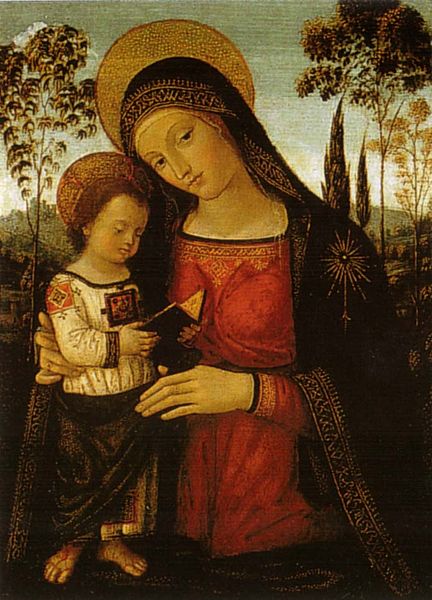
To the “woke” crowd, teaching civility and manners favors artificial concepts that reinforce power structures and control behavior. This Marxist perspective reduces everything to the class struggle terms of oppressor and oppressed. For this reason, manners must be eradicated and never taught to vulnerable children.
So many things today reflect this anti-manners mentality. This trend can be seen in brutal and obscene speech or texting. It is found in ugly, dirty and torn clothing. Coddled children absorb this lack of manners from uncouth adults, who fail to impose rules lest they hurt feelings.
Indeed, in the Marxist worldview, Western civilization is the culprit for manners and all things racist, colonialist and evil. Hence, children must be protected from courtesy and manners that transmit this civilization’s artificial and hateful values to future generations.
Not Noble Little Savages
Like Rousseau before them, those who hate manners long to return to pre-modern, even medieval times, when things were more tribal, natural and spontaneous. Pre-modern children were “noble little savages” who ran about wildly without supervision. Ribald scenes of medieval revelry and feasting are the revolutionary ideal.
However, such depictions are figments of postmodern imaginations. “This image of ill-mannered chaos is much more of a contemporary invention than one true to the Middle Ages,” writes medieval scholar Prof. Kathryn Walton.
Indeed, medieval times developed manners and courtesy. Children were taught to behave not like little savages but little Christians who respected others. They learned the rules of good living.
Cultivating Virtue with Courtesy Books
It could not be otherwise. Christian civilization facilitates the practice of virtue. Courtesy and manners allow people to practice acts of charity toward neighbors for the love of God. Relationships can then flourish in an atmosphere of peace and harmony. Early training during childhood develops good habits of respect that govern their whole lives.
Eternal and Natural Law: The Foundation of Morals and Law
The proof that pre-modern children minded their manners is found in history. Medieval scholars, like Prof. Walton, claim a genre of literature called courtesy books circulated widely. These were manuals by which children learned manners and courtesy as part of their upbringing. The teachings of these books filtered down to all levels of society in the Middle Ages.
Courtesy books were written in straightforward language, which indicated how a child should behave in every life circumstance. The child learned how to walk, dress, read, eat, play and socialize. The little books were written in clear didactic prose with little poetic embellishment.
How Courtesy Books Developed
Courtesy books were developed in twelfth-century Christian Europe. Their origin appears to be inspired by the leading institutions of the time. Parents obtained these books because they wanted their children to learn manners that corresponded to the practice of virtue and help them progress in life.
In his book, From Childhood to Chivalry, Nicholas Orme links courtesy and chivalry. The knight was well-mannered and treated all with charity and manners. The code of chivalry insisted upon protection and extreme courtesy to the weak and unprotected. Parents saw this behavior as ideal and incorporated it into child-rearing attitudes and literature.
A second inspiration for courtesy books came from the monasteries. Monks striving after perfection also applied this quest to human relationships. They wrote behavior manuals for young novices. One example was the Latin-language text De Institutione Noviciorum, written by the famous theologian Hugh of St. Victor in Paris, France, around 1141. The novices received norms on dressing, speaking, eating, and behaving in the most sacral manner possible.
 Learn All About the Prophecies of Our Lady of Good Success About Our Times
Learn All About the Prophecies of Our Lady of Good Success About Our Times
From these sources, authors wrote courtesy books that soon became extremely popular throughout Europe. The first texts were in Latin and limited to novices and children of the aristocracy. However, French and English translations soon followed and filtered down to youth at all levels of society. These books continued to be published into the Renaissance and the early modern era.
The Nature of the Courtesy Book
The contents of courtesy books were written in direct and simple prose that children could understand. These aids were not teaching manuals for parents but guides for children to read and obtain a notion of what was expected of them.
One prevalent English example of this genre is The Book of Courtesy, written in Middle English around 1452 and later printed in 1477. Extant copies exist, allowing readers to gain insight into the medieval and pre-modern minds.
Right from the beginning, the child is instructed to detach himself from vice and seek after virtue. Indeed, this first piece of advice permeates the whole book. All manners have this goal since they are the concrete application of the lofty goal of living life in common virtue.
Examples of Practical and Direct Norms
The specific guidelines could not be more practical and direct. The author does not mince words or try to adorn his advice with poetry. There is no attempt to avoid hurt feelings.

The morning preparation is clear: “When you awake in the morning, attend first to your prayers. Then, comb your hair, clean your ears, clean your face, and purge your nose of the ‘vile matter’ inside.”
Outside the house, the child is expected to impress others: “When you leave the house, do so with a pleasant expression on your face. Speak nicely to any you see and walk slowly and demurely. Don’t run off and throw stones or sticks or wrestle with dogs. Walk along quietly and politely so that all who see you say, ‘there passes a good child.’”
Science Confirms: Angels Took the House of Our Lady of Nazareth to Loreto
At the table, the instructions were straightforward: “Share your delicacies with your fellow diners so as to be seen as kind and generous and don’t complain if your serving is small. Don’t chew on bones because that is what dogs do. Instead, use your knife to cut off the meat. Don’t chew with your mouth open.”
These are samples of the kind of norms found in medieval courtesy books. There are other counsels for play, worship, work and study. They are imbued with the Faith, thus showing that there are Christian ways for doing everything.
“The existence of an entire genre of literature on the subject reinforces just how much weight politeness and courtesy carried in medieval culture,” Prof. Walton explains. “Chaos did not reign in the medieval child’s world. Their behavior was carefully monitored, and great attention was paid to teaching them to mind their manners.”
Courtesy Books Are Needed Today
Thus, manners are not artificial rules for controlling people’s lives. They are the commonsense guidelines developed over time by Christian peoples to facilitate the practice of virtue. The courtesy books made this process easier since they helped create good habits early in children’s souls before vices gain footholds in souls.
Indeed, modern society is paying the price for its rejection of civilized behavior. Lack of manners and civility is tearing society apart. A carefree attitude favoring selfish living facilitates a hellish way of life where no one respects the other. And innocent children are left without guidance at that tender age when they should be developing habits and character.
What is needed today are the simple, straightforward counsels that mince no words found in medieval courtesy books. Tragically, it is not only children who need courtesy books. Plenty of adults could use their wise advice.
Such books are much needed today. However, a return to medieval courtesy books also requires a return to the Christian order that inspired them.
Photo Credit: © adistock – stock.adobe.com
